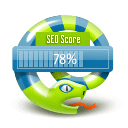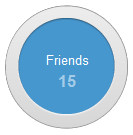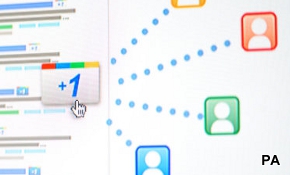
SAN FRANCISCO - Facebook finally has a serious competitor. At least, that’s what social-media investor Sergio Monsalve thinks.Venture capitalists such as Monsalve see early signs that Google+, which has picked up more than 25 million users since launching in June, is headed down the right path.
Google Inc’s infant social network, which counts Facebook CEO Mark Zuckerberg a member, has met skepticism so far. Some are waiting to see if it can maintain the rapid momentum of its first months.
Others see reason to be optimistic. Monsalve, who has invested in various consumer-Internet start-ups, is among a group of VCs who see promise.
If Larry Page’s brainchild -- which some say mimics better than Facebook the instinctive categorizing of friends that occurs in real life -- fulfills its early promise, it will come at a pivotal moment for its bigger rival.
Facebook is widely expected to go public as early as 2011, barring further market ructions. The emergence of a serious challenger -- when it now has none -- will almost certainly give some investors pause, maybe even hurt its valuation.
“It’s much richer, much more interesting pieces of content” compared to what he typically sees on Facebook, says Monsalve, who invested in recently-acquired MyYearbook.com and worked closely with MySpace in its heyday when he headed marketing at Photobucket.
The stakes are high. Facebook should pull in advertising revenue of $4.05 billion this year, according to eMarketer. Rival research house ComScore says its U.S. users spend 434 minutes a month each on the site. It has 750 million users globally.
That makes each minute spent on Facebook today worth roughly about 10 cents, excluding revenue earned from peripheral sources such as third-party games or people buying Facebook credits.
And marketers are pouring more money into online advertising overall; eMarketer says Facebook’s take should grow to $5.74 billion next year.
The question in the near future will be how much -- if at all -- Google+ cannibalizes time on Facebook.
“It’s not like for every minute on Google+, you spend a minute less on Facebook,” says Lou Kerner, an analyst at Wedbush who owns Facebook shares and likes various features in Google+, including that it is an open network with much of its information available to anybody. “You might even spend more” in a recommitment to social networking in general, he argues.
WHAT’S TO LIKE?
Just two months after its launch, the impact of Google+ on Facebook is hard to gauge. If a sense develops that Google+ keeps gaining serious momentum, that’s when it could hit Facebook’s valuation, venture capitalists say,
Signs are emerging that Facebook’s valuation on the secondary market has peaked, although that may have less to do with Google+ than with the external environment. Interpublic Group of Cos Inc reportedly sold half its Facebook stake at a valuation around $10 billion to $12 billion lower than recent private-market transactions at around $80 billion.
Watch out, some say. Among the things venture capitalists like about the new service: the longer-term ability to integrate search -- Google’s core strength -- into social streams, so for example, a favorite search result could be shared with the click of a button.
Also, the 5 percent fee Google charges game developers for transactions on Google+ compared with Facebook’s 30 percent.
And circles, perhaps the most-discussed feature.
“For some time now I have been pitched on businesses that attempt to solve the groups problem: how do you share information efficiently with small groups of people,” David Hornik, a partner at August Capital, told Reuters.
Users can assign their contacts to one or many circles-- from family and work to hobby groups such as book clubs -- and select which comments to share with specific circles.
“Google+ does a nice job of allowing more purposeful sharing,” Hornik said. While Facebook also allows users to segment friends, it’s a less straightforward process.
Hornik says it will take until the end of the year to see how strongly Google+ is catching on.
Others point to social-networking essentials such as group chat -- on Google+, that includes video -- and just last week, a roll-out of games.
Monsalve likes Google+’s “Sparks” feature, which lets him set up lists of topics that interest him, then see related articles or videos. His Sparks topics are heavy on his portfolio companies.
Facebook boasts 750 million members, but sheer numbers are no guarantee of eventual success. In late 2006, MySpace had three times Facebook’s users -- but Zuckerberg’s invention had reached critical mass and was growing much faster than MySpace. The rest is Internet lore.
One key metric some VCs are looking for is how long it takes Google+ to reach 75 million users who spend significant amounts of time on the network -- say 10-15 minutes a day. If that happens in the next couple of months, the service “starts to become pretty interesting,” Monsalve told Reuters.
However, some say Google has already made a few missteps. Last week, Google+ banned the use of pseudonyms and nicknames on the service, which some investors say could limit its acceptance among the free-wheeling cyberspace crowd.
David Cowan, a partner at Bessemer Venture Partners whose investments include social-networking sites such as LinkedIn Corp, believes Google+ is missing an opportunity.
“Think about someone who is challenging her government, or his employer,” he told Reuters. “People want to be social in contexts that do not and should not demand transparency of identity.”
Others, such as Dave Whorton of Tugboat Ventures, believes competition from an unexpected source -- perhaps even what he calls “sharing fatigue” -- may prove more disruptive to Facebook than any rival social network.
With a proliferation of social media sites, including Twitter, Facebook, Linked In and Tumblr, many people might shy away from adding another social network to the mix. Those that do may have limited time to devote to it.
ComScore says social networking overall continues to grow strongly for now, with U.S. users spending 385 minutes in July on such sites.
There is one wild card: with its acquisition of Motorola Mobility Holdings Inc, coupled with Android, Google may have landed an important weapon to help Google+ go mobile more deeply than Facebook.
“Ultimately, we move more and more toward mobile,” Greg Gottesman, a partner at Madrona Venture Group, told Reuters.
He believes advances in social networking on phones could be key to winning over teenagers, which eventually is “where the battle will be won or lost.”
© Copyright (c) Reuters
Source:
Vancouversun

















































